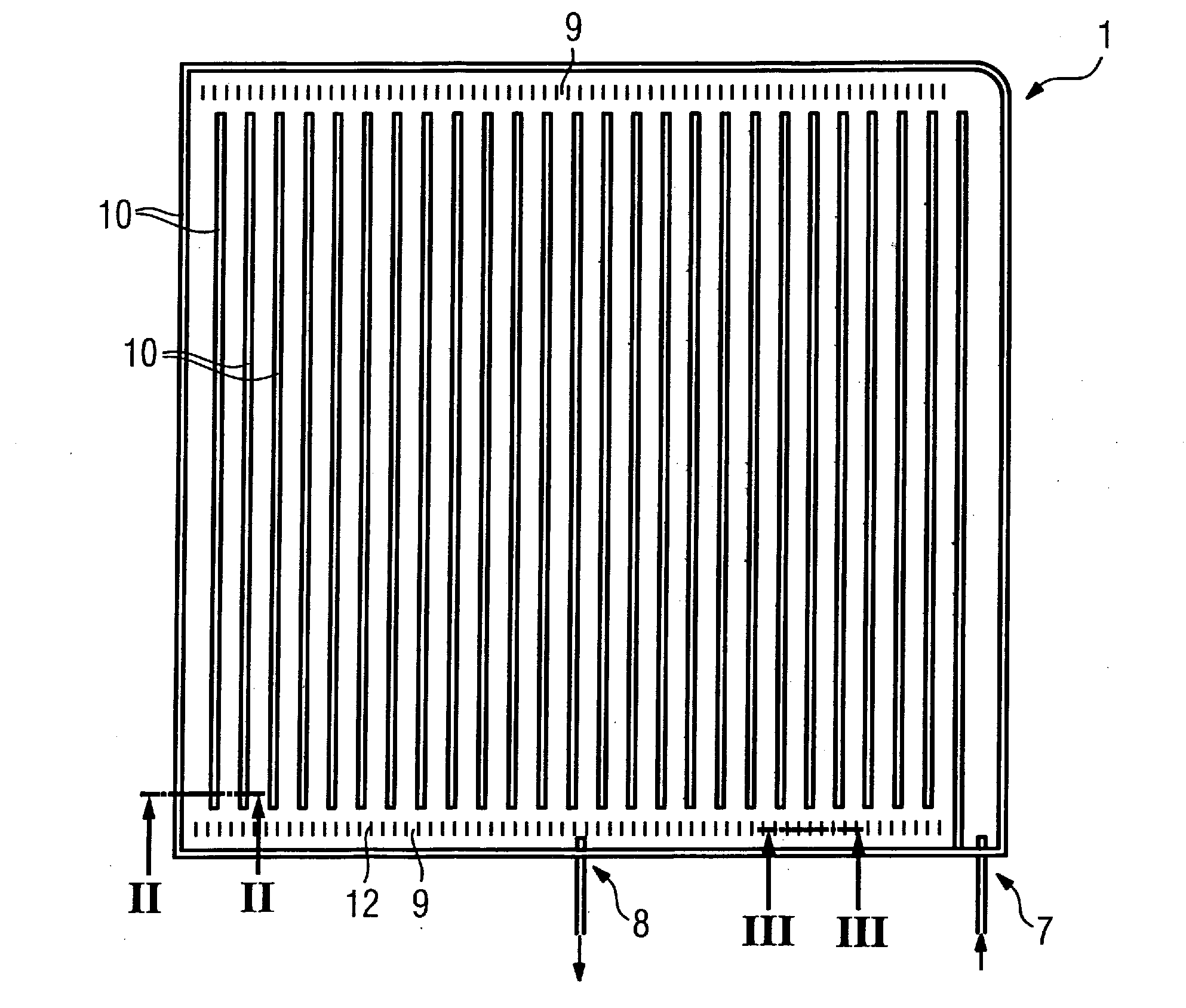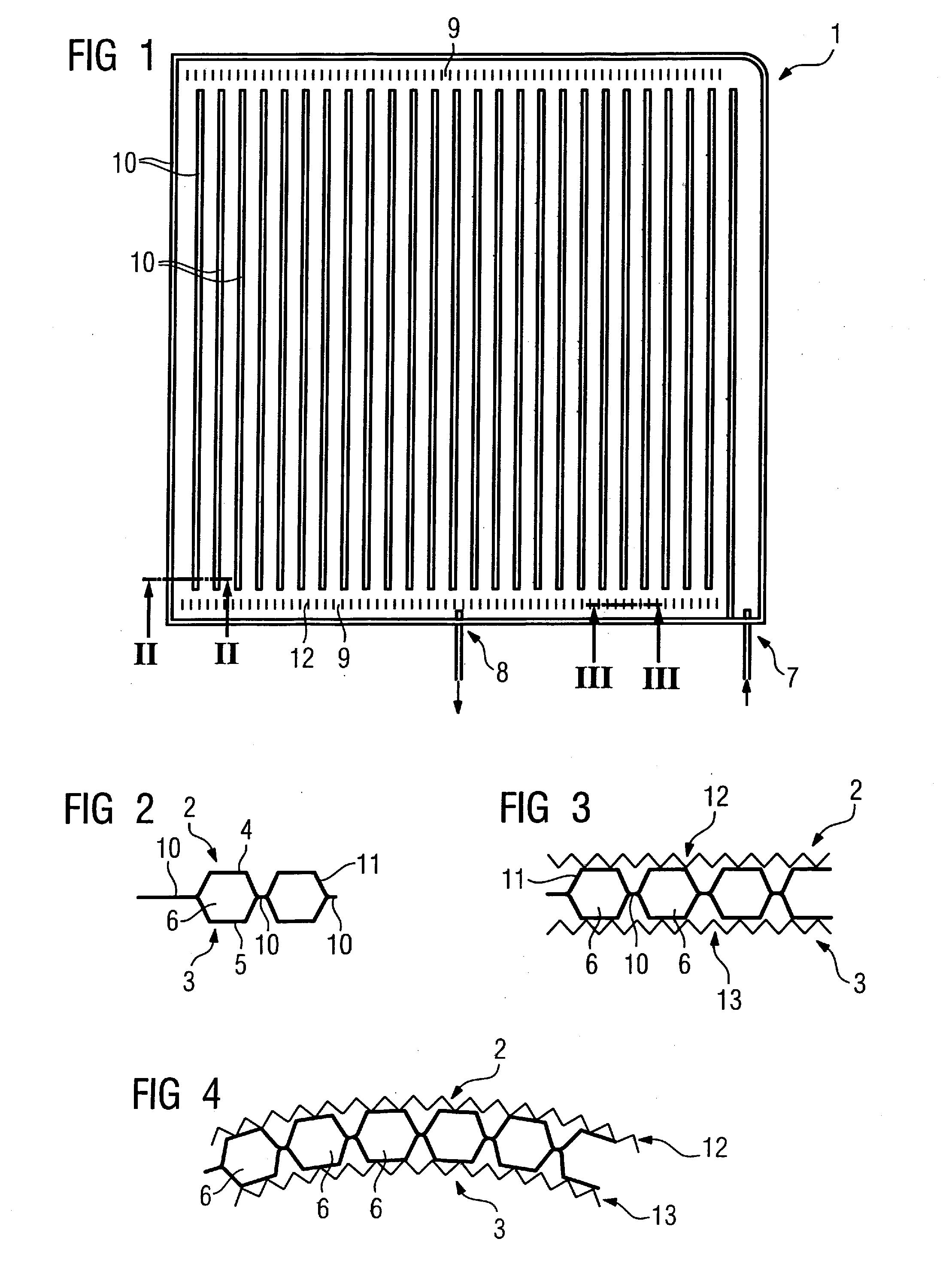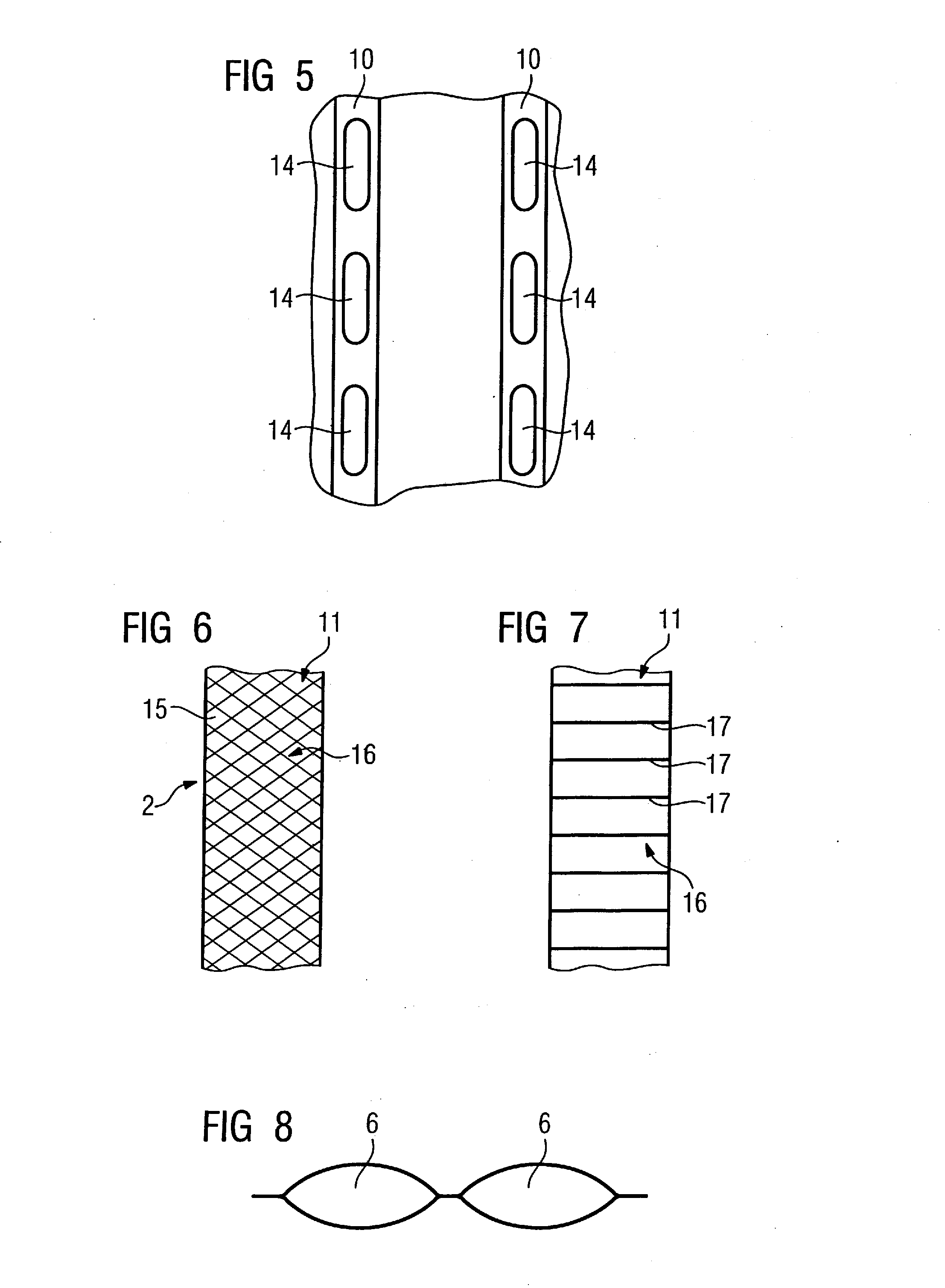Cooling device for arrangement between two gradient coil windings of a gradient coil
a cooling device and gradient coil technology, which is applied in the direction of using reradiation, lighting and heating apparatus, instruments, etc., can solve the problems of poor heat transfer, complicated and time-consuming connection of cooling tubes with support plates, and power losses of 10 kw and more, and achieve simple production and good cooling capacity.
- Summary
- Abstract
- Description
- Claims
- Application Information
AI Technical Summary
Benefits of technology
Problems solved by technology
Method used
Image
Examples
Embodiment Construction
[0034]FIG. 1 shows an inventive flat cooling device 1 having (see FIG. 2) two separate films 2, 3, both comprising a thermoplastic plastic material, which films were reshaped in a reshaping method to form a specific channel geometry. Each film has been provided with coolant channel sections 4, 5 (running vertically in the shown example) in a deep drawing method, whereby the coolant channel sections 4, 5 connect to form a dimensionally-stable coolant channel 6 after the films 2, 3 are placed atop one another. This coolant channel 6 runs effectively in a meandering path from the inlet 7 to the outlet 8. Respective collection channel sections 9 (that are not shown in detail in section) are formed at the facing sides. The two films 2, 3 are connected liquid-tight with one another in the region of the connection sections 10 in a thermal connection method. This appropriately ensues directly in the reshaping tool that has two mold parts in which the films 2, 3 can respectively be placed an...
PUM
| Property | Measurement | Unit |
|---|---|---|
| thickness | aaaaa | aaaaa |
| power | aaaaa | aaaaa |
| voltages | aaaaa | aaaaa |
Abstract
Description
Claims
Application Information
 Login to View More
Login to View More - R&D
- Intellectual Property
- Life Sciences
- Materials
- Tech Scout
- Unparalleled Data Quality
- Higher Quality Content
- 60% Fewer Hallucinations
Browse by: Latest US Patents, China's latest patents, Technical Efficacy Thesaurus, Application Domain, Technology Topic, Popular Technical Reports.
© 2025 PatSnap. All rights reserved.Legal|Privacy policy|Modern Slavery Act Transparency Statement|Sitemap|About US| Contact US: help@patsnap.com



